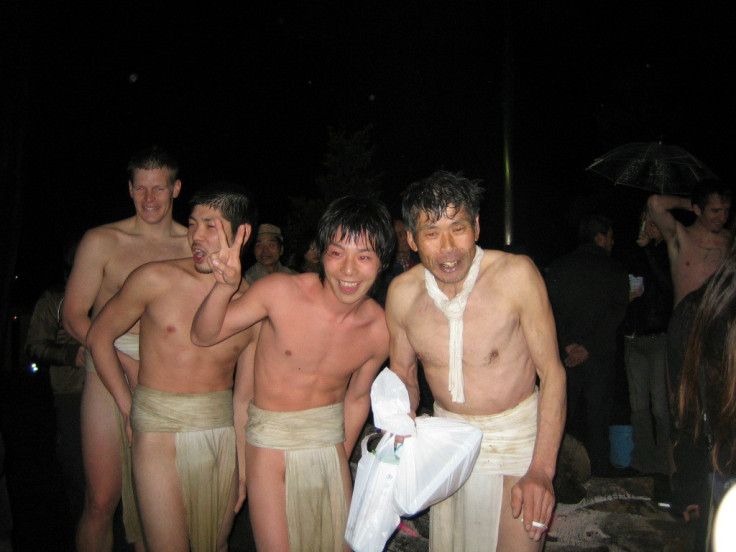
In a revolutionary move, Japan has finally permitted women to take part in the "naked man" festival for the first time in its 1,650-year history.
The festival, known as the Hadaka Matsuri, is organised every year in February by a Japanese shrine, Konomiya, in Inazawa town in Japan's Aichi prefecture.
However, women will only be allowed to participate in certain activities that do not involve getting naked. They will remain fully dressed in traditional happi coats and also won't take part in a traditional violent clash of near-naked men in loincloths.
As many as 40 women will be allowed to take part in a ritual called naoizasa wherein they will carry bamboo grass wrapped in cloth into the shrine grounds, per a report in The Independent.
"We have not been able to hold the festival like we used to for the past three years because of the pandemic and, in the time, we received a lot of requests from women in the town to take part," said Mitsugu Katayama, an official of the organising committee. He also stated that there was no active ban on women's participation in the event.
What is the "naked man festival"?
Men usually wear only a loincloth known as a fundoshi and a pair of white socks called tabi during the festivities.
The half-naked men try to snatch one of two 20 cm-long shingi, wooden sticks thrown by a priest into the crowd, along with 100 other bundles of twigs. It is believed that the person who manages to catch shingi gets blessed with a year of good fortune. The festival celebrates an abundant harvest, prosperity, and fertility.
Japan also celebrates the festival of the steel phallus, called Shinto Kanamara Matsuri. It began as a celebration of fertility centred on the Kanayama shrine. It is now referred to as the "Penis Festival" by the revellers. It is organised every year on the first Sunday of April.
The tourists flock to the Kanayama shrine carrying penis-shaped shrines and lollipops and pay homage to the male appendage. The festival coincides with the advent of spring, the season symbolic of new beginnings and rebirth, which is often associated with fertility.
The festival has a dark story behind it. According to legend, a demon once took residence inside a woman's vagina after she refused his advances. The demon, driven by envy, bit off her husband's penis when she tried to consummate their marriage.
The woman then sought the help of a blacksmith, who created a metal phallus. The steel penis broke the demon's teeth as soon as he tried to bite it. The demon eventually left the woman alone. The steel penis was commemorated with an iron statue outside the Kanayama Shrine in Kawasaki, which is dedicated to the Shinto god of blacksmiths.
In India, the Hindu Kumbh Mela festival sees Hindu holy men—Naga sadhus—naked ascetics taking a dip in the waters of India's holy rivers on the first day of the festival.
The festival is the world's largest religious gathering and lasts 55 days. According to Hindu mythology, when gods and demons fought over a pitcher of nectar believed to give immortality, a few drops fell in the cities of Allahabad, Nasik, Ujjain, and Haridwar.
The Kumbh Mela is held in one of these towns each year, depending on astrological calculations.
The most common Kumbh Mela is known as ardh (or half) Kumbh and is held every six years. Every 12 years, the cities of Allahabad, Nasik, Ujjain, and Haridwar open their doors for the purna (full) kumbh celebrations instead.
Millions of people flock to these cities every time the festival is organised in one of the aforementioned cities.







